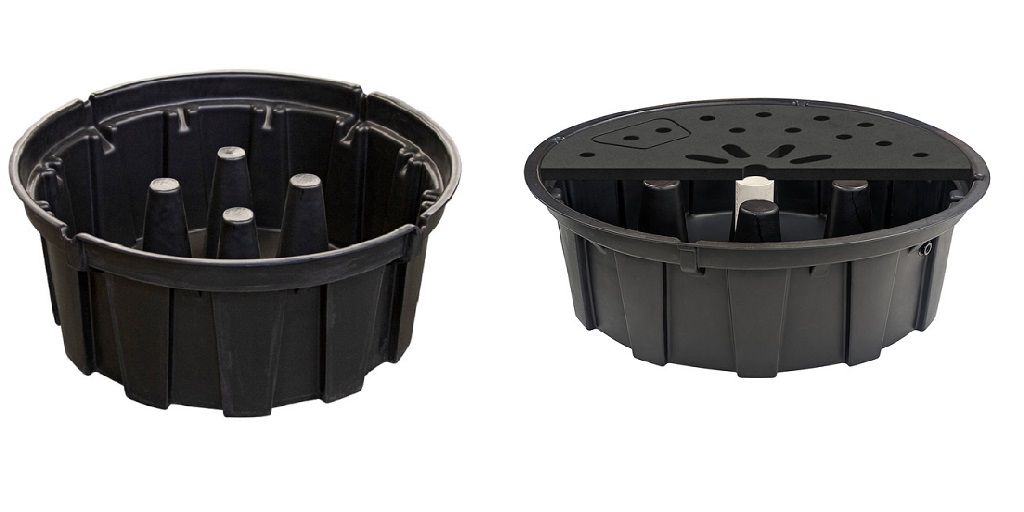
Not all water features are built the same—and neither are the fountain reservoirs that support them. Whether you’re a landscaping pro or a homeowner with Pinterest-fueled ambitions, picking the right fountain reservoir is less about guesswork and more about knowing how your setup works from the ground up. A mismatched reservoir can lead to dry pumps, overflow chaos, or that constant “why is it making that noise again?” situation. Here’s how to avoid all that.
Know Your Water Feature: Bubbling Rock vs. Urn vs. Spillway
Your reservoir should match the type of feature it’s supporting—not just in size, but in function.
- Bubbling rocks need deeper reservoirs with solid grates since water tends to splash and flow irregularly.
- Urns tend to have more predictable flow rates, making them compatible with medium-capacity reservoirs and vaults.
- Spillways are often part of larger, tiered designs that require wide, shallow basins with reliable water circulation and room for multiple fittings.
The fountain’s form determines its water demand, splash zone, and pump needs. Get familiar with how your feature behaves so your reservoir can support it, not fight it.
Depth, Volume, and Access: What to Measure Before Buying
Here’s where good intentions meet actual math.
- Depth: This controls how much water is available to your pump before it runs dry. Deeper is usually better—especially in warmer climates where evaporation happens fast.
- Volume: Consider both the fountain’s water demand and how often you want to refill it. A larger reservoir means fewer top-offs.
- Access: Don’t forget you’ll need to reach your pump eventually. Make sure there’s enough room for a pump vault or access panel. You don’t want to rip apart your setup just to fix a clog.
Measure twice, dig once. Then check the specs of the reservoir you’re considering to make sure it lines up.
The Pros and Cons of AquaBox, Basin, and Pump Vault Systems
Not all reservoirs are just holes with water.
- AquaBox systems are modular, strong enough to hold heavy stones, and perfect for large or custom setups.
- Basins are all-in-one, user-friendly units that make sense for beginners or smaller gardens. They’re often shallower but easier to install.
- Pump vaults are usually used with AquaBoxes or gravel systems, giving you dedicated access to your pump without disturbing the decorative top layer.
If you want flexibility and scalability, AquaBox setups are the way to go. If you’re after quick installation for a simple urn or rock, a basic basin may be enough.
Installing a Fountain Reservoir in Tight or Sloped Spaces
Let’s be real—most yards aren’t flat, open, and perfect.
If you’re working with tight corners, uneven ground, or landscaping challenges, a compact or modular system is your best bet. Some AquaBox-style reservoirs are stackable or can be arranged in creative shapes, making them ideal for sloped terrain or wraparound patios.
For smaller areas, make sure you choose a basin with a sturdy grate and minimal footprint—but don’t compromise so much on volume that you’re refilling every other day. Tight doesn’t have to mean tiny.
Oversizing isn’t always ideal either—it can take up more space than needed, complicate installation, and drive up costs. So, yes, size matters. But balance matters more.
A well-matched fountain reservoir isn’t just a behind-the-scenes component—it’s the unsung backbone of a reliable water feature. When you size it right, match it to your fountain type, and choose the right style for your space, your setup becomes seamless, quiet, and actually low maintenance like you hoped it would be.
Looking for pro-grade reservoir kits, vaults, and basins that actually hold up? Visit Blue Thumb online to explore options that don’t just fit your landscape—but make your water feature work the way it should.


